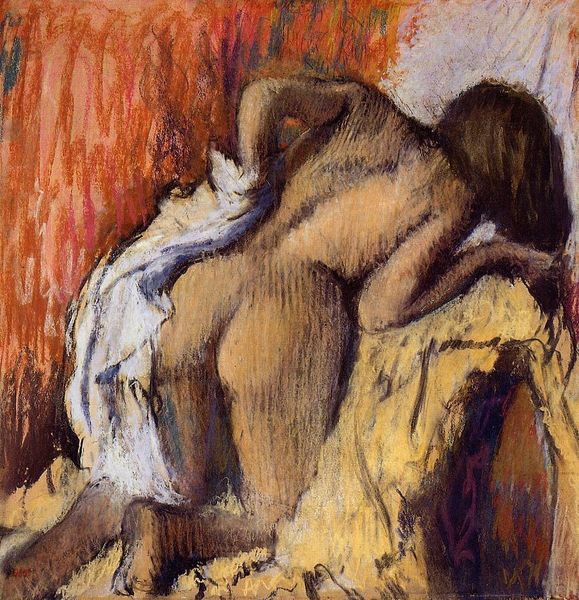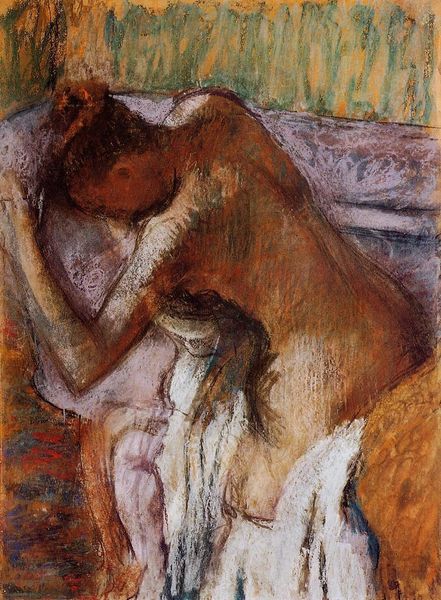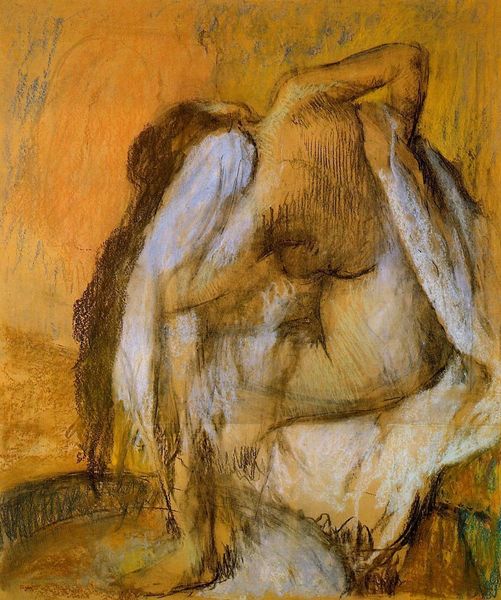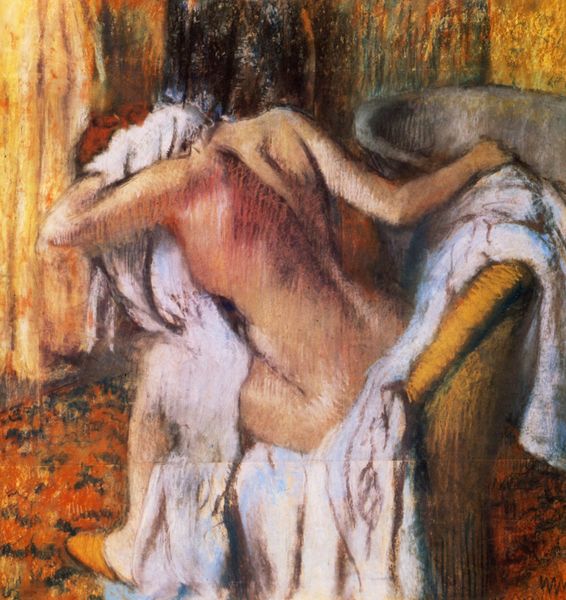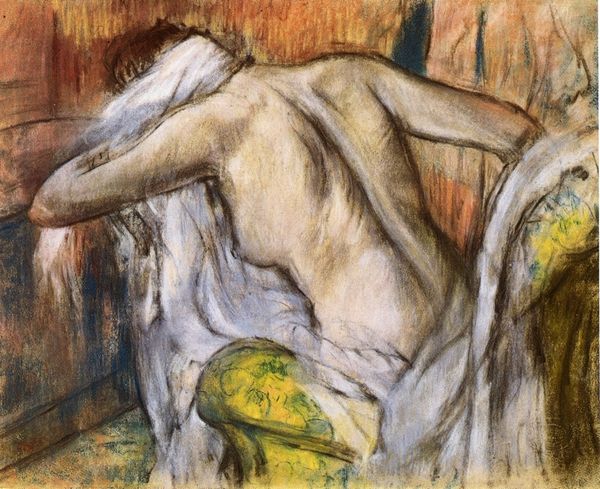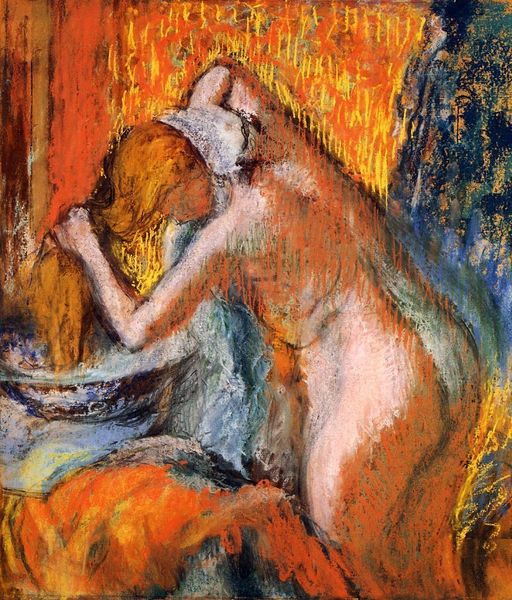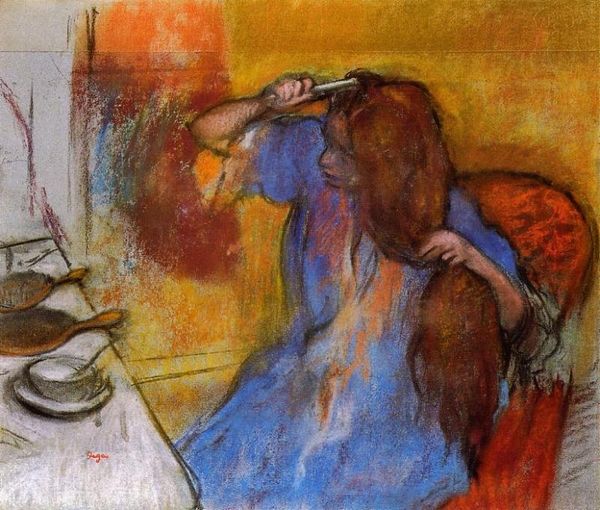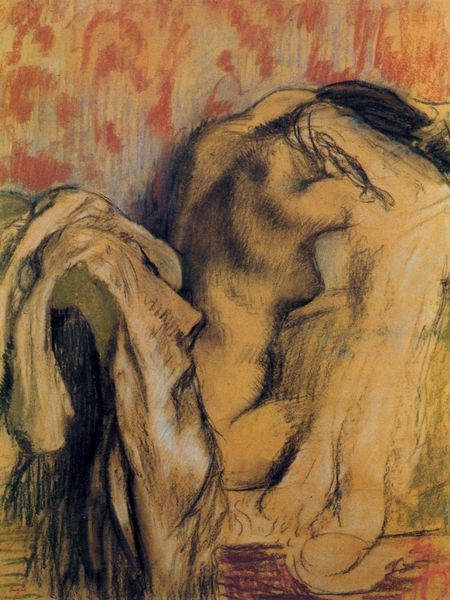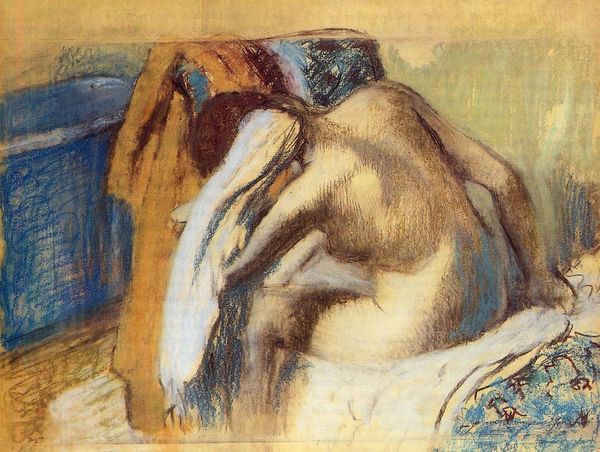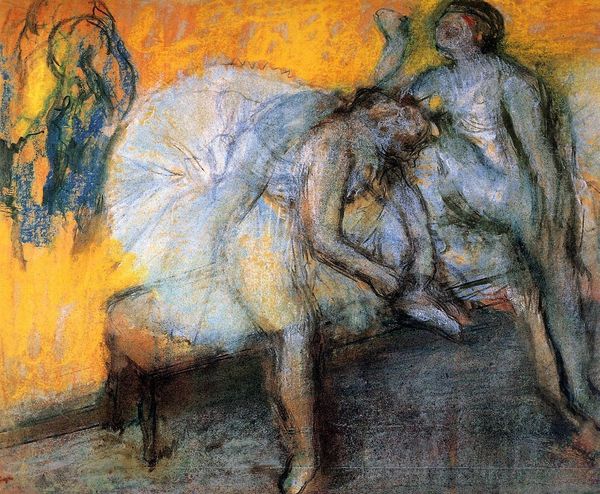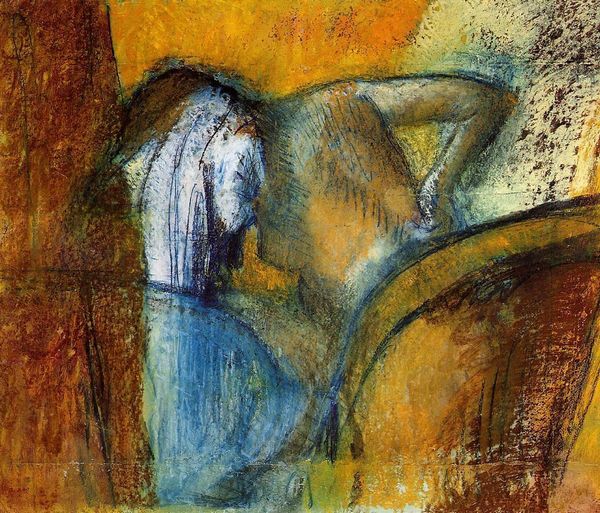
Copyright: Public domain
Editor: So, this is Degas' "Woman with a Towel," created around 1898 using pastel. I'm struck by how intimate it feels, almost voyeuristic, yet the woman seems so unaware of our gaze. What do you see in this piece? Curator: I'm interested in the formal arrangements Degas employs. Observe how the contours of the figure and the towel create a dynamic interplay of line and shape. Consider, too, how the artist uses a limited palette of muted colors, predominantly yellows, blues, and fleshy tones, to establish a sense of harmony. The composition appears casually observed, yet is clearly a constructed reality. Do you perceive any deliberate disruptions to this harmonious balance? Editor: Well, the way the lines are sketched rather than smoothly blended... the starkness of the woman's back compared to the hazier background, creates some tension, doesn't it? Curator: Precisely. Note also the rough texture achieved through the pastel medium. Degas isn't aiming for perfect representation but a textural rendering of light and form. It's almost as if the visible strokes and scumbles articulate the artwork itself. How might this deliberate materiality alter our experience of the represented form? Editor: I guess it keeps reminding you it *is* a drawing, and you're conscious of Degas’s choices…rather than losing yourself completely in the image? Curator: Exactly. By calling attention to the materiality of the artwork, Degas shifts our focus away from pure mimesis, instead inviting us to analyze and engage with its intrinsic qualities. The image invites analysis on different levels; representation, visual language, texture, and technique. Editor: That's a great point, how all those components interplay with the actual scene to communicate even more. I'll never look at a Degas the same way!
Comments
No comments
Be the first to comment and join the conversation on the ultimate creative platform.

